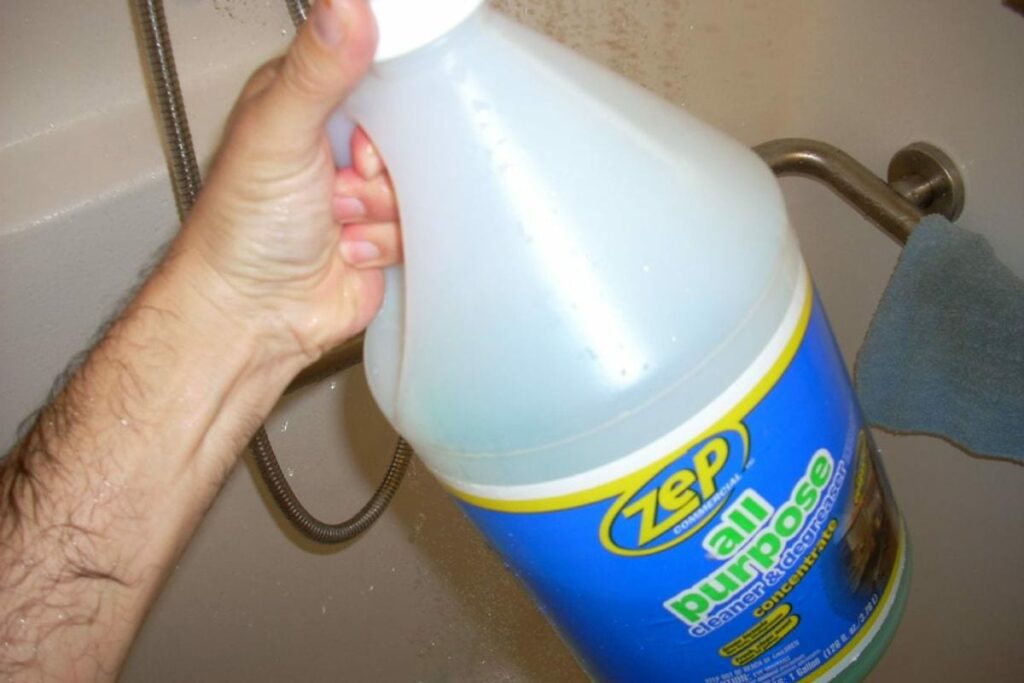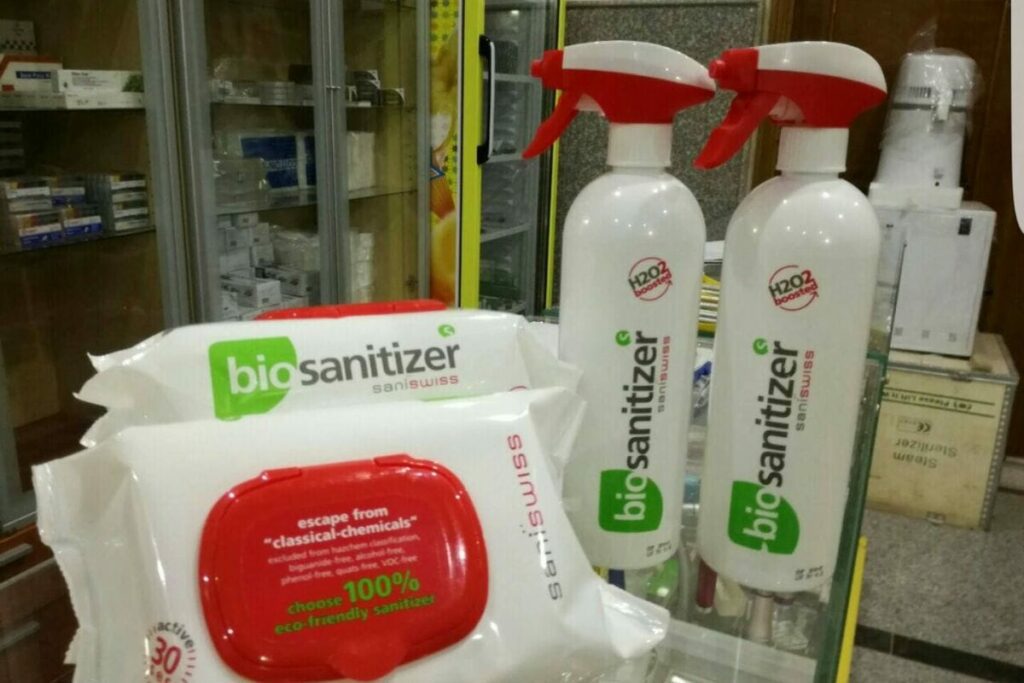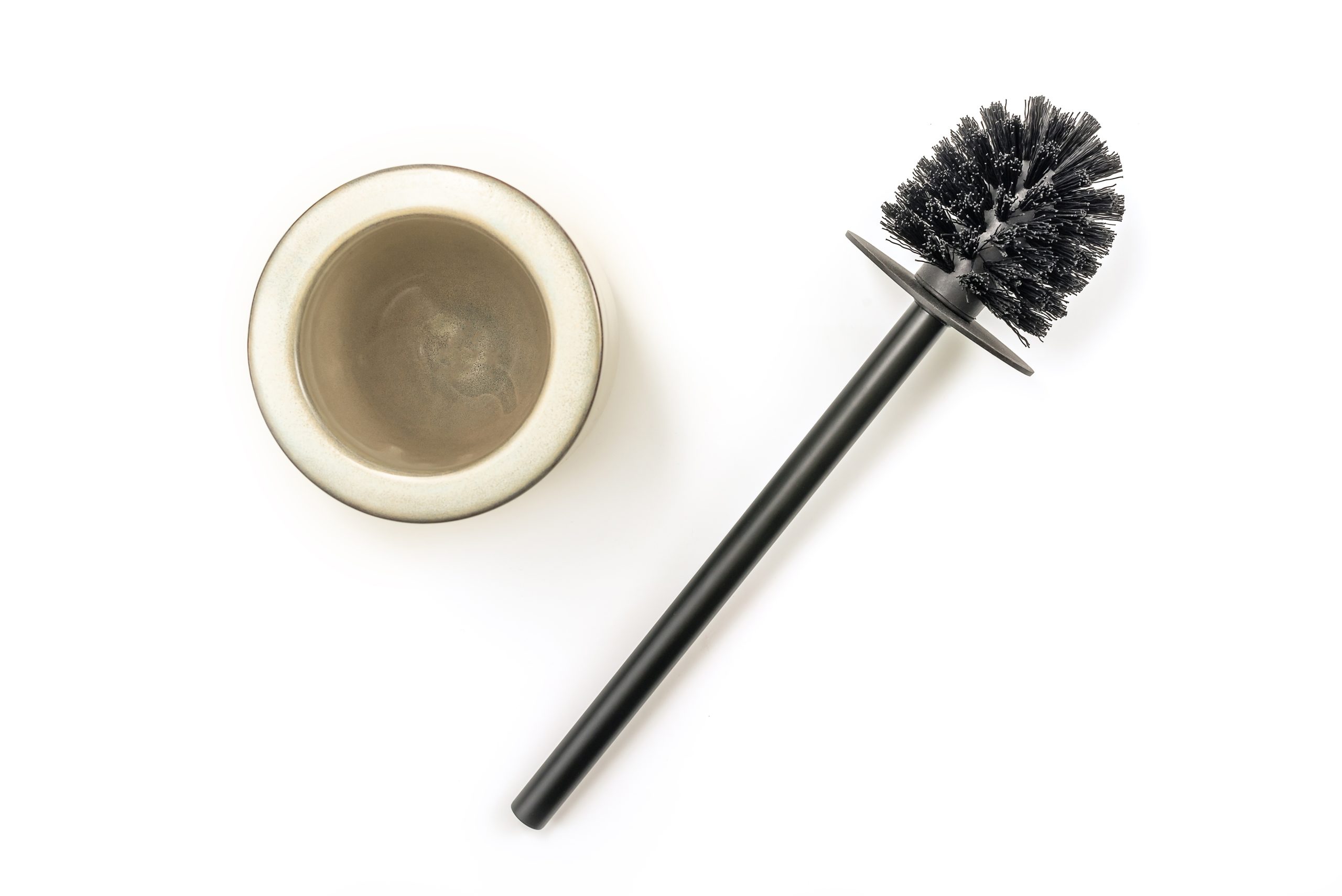The toilet brush is the unsung hero of your bathroom that keeps your toilet squeaky clean and spotless! Unfortunately, the toilet brush is often neglected and forgotten like any true hero. But did you know that cleaning your bathroom with a dirty, unclean toilet brush can be worse than not cleaning it at all? If you want a clean toilet, you got to show some love to the good old toilet brush!
You can clean your toilet brush and holder with disinfectant spray, chlorine bleach, or an all-purpose cleaner. If you want a deep clean, use a warm bleach solution, and soak the brush and holder for at least two hours before rinsing them thoroughly with cold water.
A dirty toilet brush in your bathroom can create unsanitary conditions. So, how to clean the brush? How often should you clean it? When should you throw the old brush away? If you seek answers to these questions, stick around!
How Should You Clean Your Toilet Brush and Holder?
It is crucial to clean the toilet brush and holder after each use thoroughly. Failure to do so will result in your toilet brush becoming a breeding ground for microbes that will spread all over your bathroom the next time you use it. I found the following three methods work the best to clean the toilet brush and holder-
Cleaning Toilet Brush and Holder with Bleach Solution
Cleaning with bleach is the best method to clean your toilet brush and holder. Bleach can not only clean the stains and residues on the brush and the holder, but it can also disinfect the surfaces.
Here are step-wise instructions to use bleach to clean the toilet brush and holder-
Step 1: Prepare the bleach solution.
Prepare the bleach solution by adding one cup of liquid chlorine bleach to a bucket containing one gallon of hot water. Heating the water increases the efficiency of the bleach.
Step 2: Soak the brush and holder in the bleach solution
Once the bleach solution is ready, immerse the brush and the holder into the solution so that both are completely submerged. Let the brush and holder sit in contact with the bleach solution for at least an hour. Wear gloves throughout the process, and be careful while adding the bleach to hot water.
Step 3: Rinse thoroughly and dry
At the end of the soaking time, remove the brush and the holder and rinse thoroughly in cold water to rinse the bleach. Dry the holder and brush before storing them back in place. You can even use a cloth to remove excess moisture and achieve rapid drying.
Pro tip: If you don’t have a bucket, you can do the whole process in your bathroom sink. Just remember to rinse the sink thoroughly once done.
Can an All-Purpose Cleaner Clean Toilet Brush and Holder?
Technically, yes! Any all-purpose cleaner can clean your toilet brush and holder, even though it is not designed to do so in the first place.

To clean your toilet brush and holder with an all-purpose cleaner, prepare a solution of the cleaner in water as we did with bleach and submerge the items to be cleaned. Remember that if you replace the bleach with an all-purpose cleaner, you might have to soak the brush for at least two hours.
All cleaning products, including the all-purpose cleaners, have chemicals in them. Vinegar is a great alternative cleansing agent if you want a natural solution. All you need to do is soak your toilet brush and the holder in a couple of gallons of water containing a cup of vinegar.
The acidity of the vinegar can cut through the grime and easily clean the residue on the brush. Besides, vinegar water can be a good natural disinfectant as well.
Does a Disinfectant Spray or Wipes Work?
You have spent a solid hour and a half cleaning every nook and cranny of your bathroom, and you are exhausted. Suddenly, you remember that you forgot to clean the toilet brush, but you neither have the drive nor the energy to clean it. So, what should you do?
Disinfectant spray or wipes can work to clean your toilet brush and the holder if you are in a hurry. However, remember that these products are not meant to clean as much as disinfecting surfaces. So, while you might successfully kill the microbes on the surfaces, it is not the same as cleaning.

You can increase the efficiency of the process by following these steps-
- Once you use the toilet brush, clean it with the holder under running water for a minute or so.
- Hold the brush over the toilet bowl and apply the disinfectant spray over the bristles, ensuring proper coverage.
- Use a disinfectant wipe to wipe down the handle of the brush and the holder inside and out.
- Only use one side of the wipe and discard the wipe after a single-use
- The disinfectant spray works only if the solution remains in direct contact with the surfaces for at least 10 minutes.
- Once the 10-minute wait is over, dry the brush and the holder with a piece of cloth and put the brush back in the holder.
Pro tip: If you don’t have a disinfectant spray handy, you can also use a 3% hydrogen peroxide solution in a spray bottle. Always remember to wear gloves when dealing with hydrogen peroxide.
When Should You Replace Your Toilet Brush?
You should replace your toilet brush if the bristles-
- Become flat and can’t hold their shape any longer
- Become discolored and smelly
- Start to fall off
- Become brittle

However, it is best not to wait until any of the above signs appear. You should change your toilet brush every three to six months for the best possible results.
If you own a toilet brush with a silicone head, remember that they tend to last longer than nylon brushes. If you take good care of your silicone brush, it should easily last you a year.
How to Increase the Longevity of Your Toilet Brush?
Although the toilet brush and holder are not particularly expensive, purchasing them every few months can quickly add up. If you want to increase the life of your toilet brush and holder, then make sure to follow the tips given below-
- Clean and dry the toilet brush and holder thoroughly after every use. You can follow any of the methods mentioned above to clean but ensure that you don’t miss a cleaning.
- Always dry the brush thoroughly before storing it in the holder.
- Clean the inside of the holder with a disinfectant wipe before storing the brush in it.
- Avoid storing the holder in a place where water can enter in it.
Frequently Asked Questions
Is it necessary to dry the brush before placing it in the holder?
Yes! You should avoid placing a wet brush back in the holder as the excess moisture can become a breeding ground for microbes.
How often should I replace my toilet brush?
You should replace your toilet brush at least once every three-four months.
To conclude
Cleaning the toilet brush and holder might not be something you look forward to, but it is an essential chore. Remember, your bathroom is as clean as the tools you use to clean it!

Amos Christen graduated with a bachelor’s degree in Interior Design from Drexel University — Philadelphia, PA. Since 2003, Amos has worked with top interior design professionals in this area, including architects and interior/graphic/lighting designers. As a skilled interior designer, Amos Christen is highly versed in fine arts and crafts and uses that to supplement his main area of expertise. He often publishes articles related to home décor on several websites, including Sprucetoilets.com, Sprucebathroom.com, and Mybesuitedhome.com. He also contributes to leading interior design magazines.
